 The Sam440ep is a PPC motherboard based on the PowerPC 440EP and built by Italian company ACube Systems.
The Sam440ep is a PPC motherboard based on the PowerPC 440EP and built by Italian company ACube Systems.
History
ACube Systems is an Italian company created in early 2007 and is the result of a merger of 3 companies: Alternative Holding Group, Soft 3 and Virtual Works. Acube's aim was to support the Amiga in various ways: software development (e.g. STFax 2007), hardware repairs and construction of a new machine for the Amiga world.
A prototype motherboard was produced before the establishment of the company in February 2006 and was shown at the Italian exhibition Pianeta Amiga in September 2006. On the 1st April 2007, ACube announced the availability of the motherboard Sam440ep to industrial customers. A number of Operating Systems were ported to the Sam440ep (see section "Operating Systems" below) but OS4 support was not confirmed until September 17, 2008 when an agreement between ACube and Hyperion Entertainment was announced.
To explain the name of the board, "Sam", you need to know that the first tests were conducted on the evaluation board for the AMCC 440ep (code named was "Yosemite"). The motherboard was named in honor of the Cartoon hero Yosemite Sam.

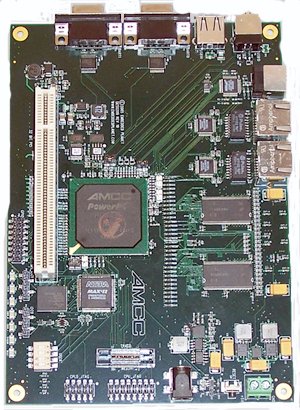
Yosemite Sam and the evaluation motherboard
Specifications
The motherboard is compact and modular and is of the Mini-ITX form factor wisth a size of 170x170 mm. There are a large number of components mounted on both sides. Key features include passive cooling, low power consumption, 4 video outputs (VGA, DVI, TV (S-Video) and LVDS) and three possible boot sources (SATA, USB and PXE network boot). Additionally, the Sam440ep is very scalable.
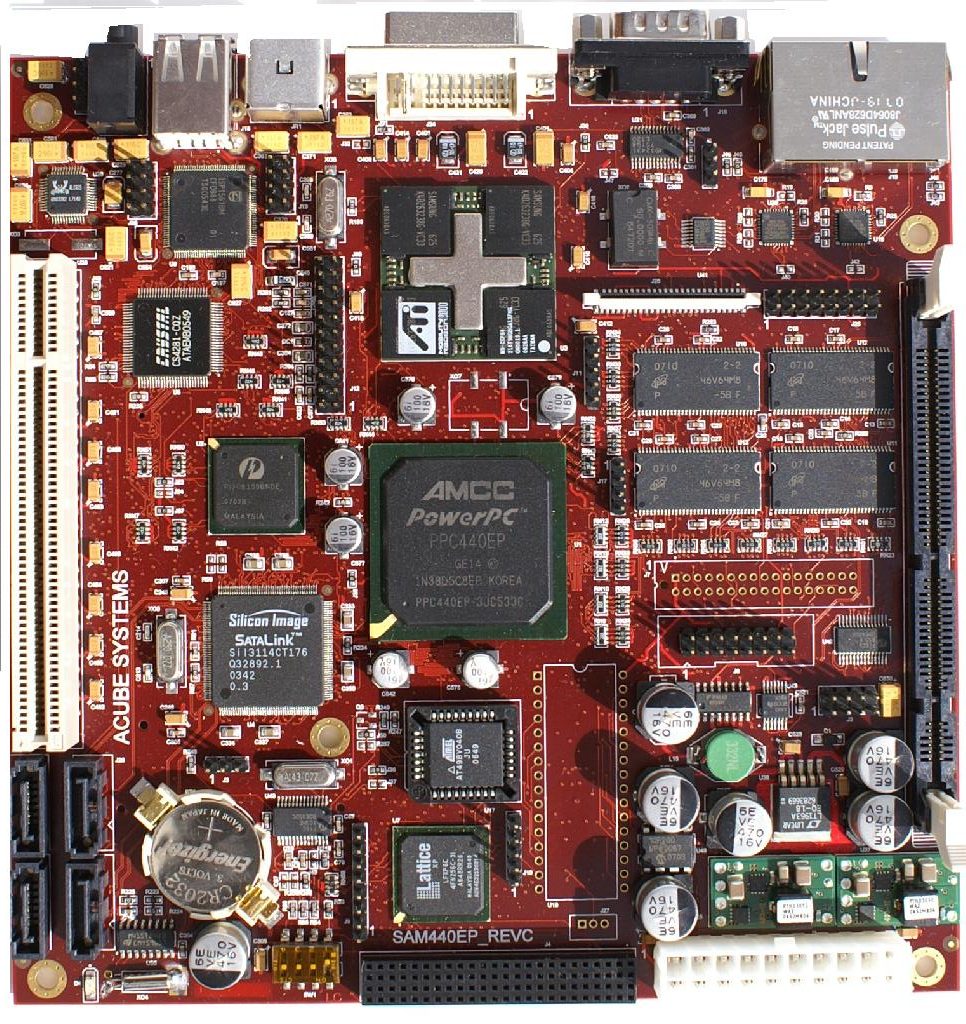

The processor is a PPC 440ep made by AMCC under license from IBM. Being a "system on a chip" (SoC), the processor integrates the Northbridge and Southbridge controlling other controllers (USB 1.1 and 2.0, PCI, Ethernet etc) saving development time and also saves space on the motherboard. Fewer components means the Sam440ep's cost is reduced although as the board is still relatively expensive.
The PPC 440ep is a 32-bit processor with a double-precision FPU although the processor lacks an Altivec unit but theoretically, the 440ep can perform 1334 MIPS at 667MHz. The processor is 0.13µm and uses CMOS technology. A 456 pin FBGA socket allows the processor (just 35x35 mm) to be connected to the motherboard and clock speeds vary from 333 - 667MHz. The low clock speeds allow for low power consumption (just 3 watts at 533MHz) hence the Sam440ep is passively cooled. The 440ep can handle up to 1GB of RAM with 512Mb RAM on-board and a further 512Mb can be installed by the user.
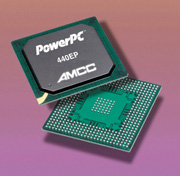
The Sam440ep has a number of "modern" ports compared to older Amigas and can be considered the Amiga NG (next generation) as USB 2 and SATA are included. Additionally, the motherboard provides a JTAG interface (for testing electronics), a FPGA (Field Programmable Gate Array) and a ccTalk port used for monetary transactions. This ports should allow the Sam440ep to be extended considerably by adding new features.
The ATi Radeon Mobility 9000 (aka M9) graphics chip was introduced by ATi in the summer of 2002 and is based on the RV250 graphics engine. With this graphics chip the Sam440ep can produce resolutions of 2048x1536 (QXGA) in both 2D and 3D and, being aimed at the embedded market, consumes about 25 watts (with the 440ep at 667MHz). The Mobilty Radeon 9000 has 64 MB DDR RAM, an internal frequency of 250 MHz, and runs memory at 200 MHz and 400 MHz RAMDAC.
Only 3.3V PCI cards should be used although cards which support 3.3V and 5V are compatible. If you attempt to use a 5V PCI card it is possible you'll damage the Sam440ep in the process
List of features
- Mini-ITX (170x170 mm).
- PowerPC 440EP SoC from AMCC (frequency of 533 or 667 MHz).
- DDR memory controller 266.
- PCI controller.
- Flash memory controller.
- USB 1.1 host controller and USB 2.0 device.
- Two Ethernet ports 10/100 Mbit / s.
- A serial port (supports up to four).
- Two interfaces I2C (Inter Integrated Circuit).
- SPI (Serial Peripheral Interface).
- 1x port 64-pin GPIO (General Purpose Input / Output).
- 512 MB DDR 266 on-board (1x socket for DDR DIMM memory 100, maximum 512 MB).
- USB 2.0 OHCI / EHCI NPX.
- Audio Cirrus Logic CS4281 and Realtek ALC655 codec.
- Four Serial ATA (Silicon Image).
- Graphics chip (ATI Mobility Radeon 9000) with 64MB of memory.
- FPGA Lattice XP with I / O connector pin 80.
- 1x PCI 2.2 (32-bit, 33 MHz, 3.3 V).
- Optional Mini PCI (32 bit, 33 MHz).
- PCI to PCI bridge Pericom 8150B.
- JTAG (Joint Test Action Group).
- DVI output.
- SVideo output.
- VGA.
- Output LVDS (Low-Voltage Differential Signaling)
- RTC with battery.
- UBoot Firmware 1.3.1.
Schematic
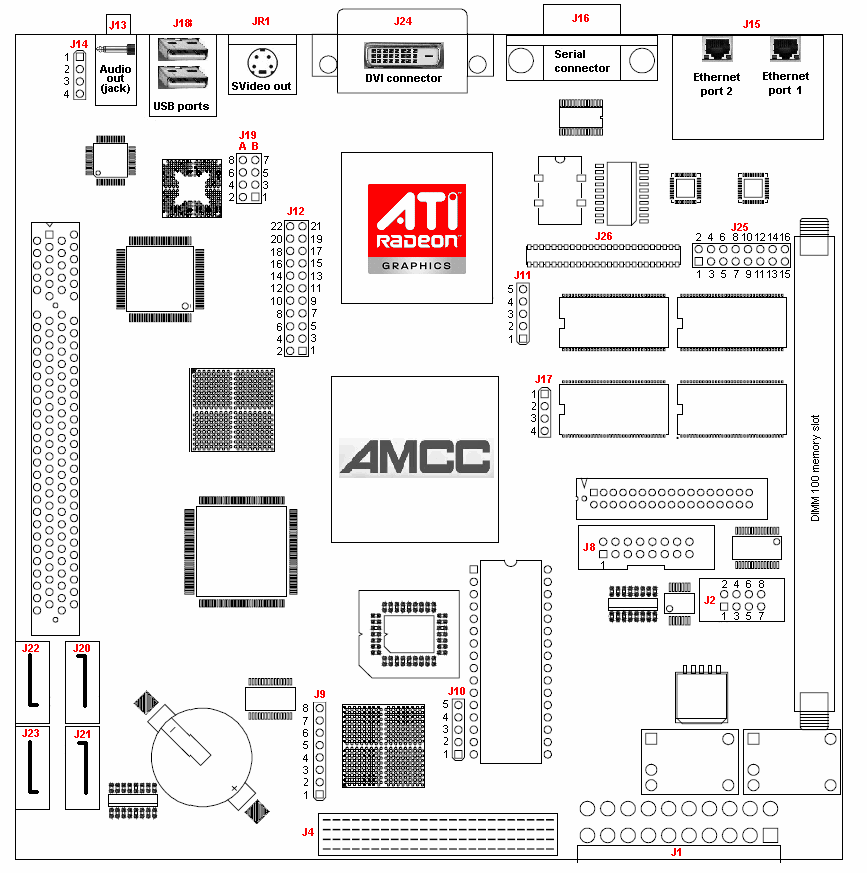 Schéma |
J1: ATX power connector. J2 : panel connectors to the housing. J4: Conecteur extension to the FPGA. J8: JTAG (CPU). J9: JTAG (FPGA). J10: I2C bus. J11: SPI/I2C bus. J12: Audio expansion port. J13: Audio Output Jack. J14: Audio CD / DVD. J15: Ethernet ports. J16: Serial Port. J17: GPIO (used as internal USB OHCI). J18: External USB EHCI / OHCI. D19: various ports (used as internal USB EHCI / OHCI). J20: SATA (HDD). J21: SATA port. J22: SATA port. J23: SATA (CD / DVD). JR1: SVideo output. J24: DVI output. J25: VGA output. J26: LVDS output. |
Included with the Sam440ep motherboard are a SATA cable, a DVI->VGA adapter and a paper manual.
There are different versions of the Sam440ep. A choice of processor speed: 400, 533 and 667 MHz and those with or without memory slot. Other configurations include adding or removing certain components (the ccTalk connector, SATA connector, VGA, DVI, LVDS output, and SmartMedia). There may also be a variant in the Flex ATX form factor.
Firmware
The Das U-Boot 1.3.1 (U-Boot) firmware, open source and released under the GPL, is installed in the Sam440ep and has been through a number of changes in its history. The U-Boot project was started in 2000 by Magnus Damm under the name 8xxROM. The project later moved to Sourceforge and was renamed "PPCBoot" but following more development and support for other processors the name was again changed to U-Boot. Presently, U-Boot is developed by Wolfgang Denk and many other contributors and has been developed to support ARM processors (720, 920, 925, 926 ,...), XScale, Coldfire, MIPS, x86, NIOS, Microblaze, Atmel (AT91RM9200, AVR32 AP ,...) or Samsung (S3C44B0, S3C24X0 ,...) among others. U-Boot's purpose is to initialise the hardware and start booting the desired Operating System. U-Boot supports booting from IDE, SCSI, PCMCI and Compact Flash.
U-Boot is not entirely without bugs (no software is) and version 1.3.1 had a problem using USB keyboards. The workaround was to connect the keyboard to the top USB port. An earlier version of U-Boot (1.2.0) had a problem with DVI support meaning it was necessary to use a monitor with VGA input or use a DVI->VGA adapter. To determine your U-Boot version, simply enter "version" at the U-Boot prompt. To upgrade U-Boot, download the latest version, burn it to CD and follow the instructions.
Compatible Operating Systems
The following Operating Systems are either available or in development.
- AmigaOS 4.1.
- Linux Debian Lenny.
- Linux Fedora 9.
- Linux Ubuntu.
- Linux CruxPPC.
- FreeBSD.
- AROS (Only LiveCD presently.).
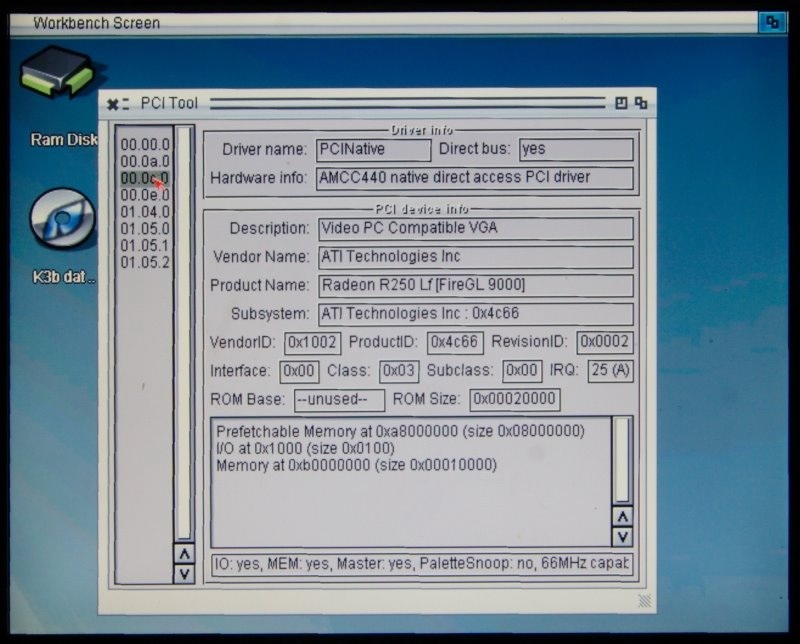 AROS
AROS
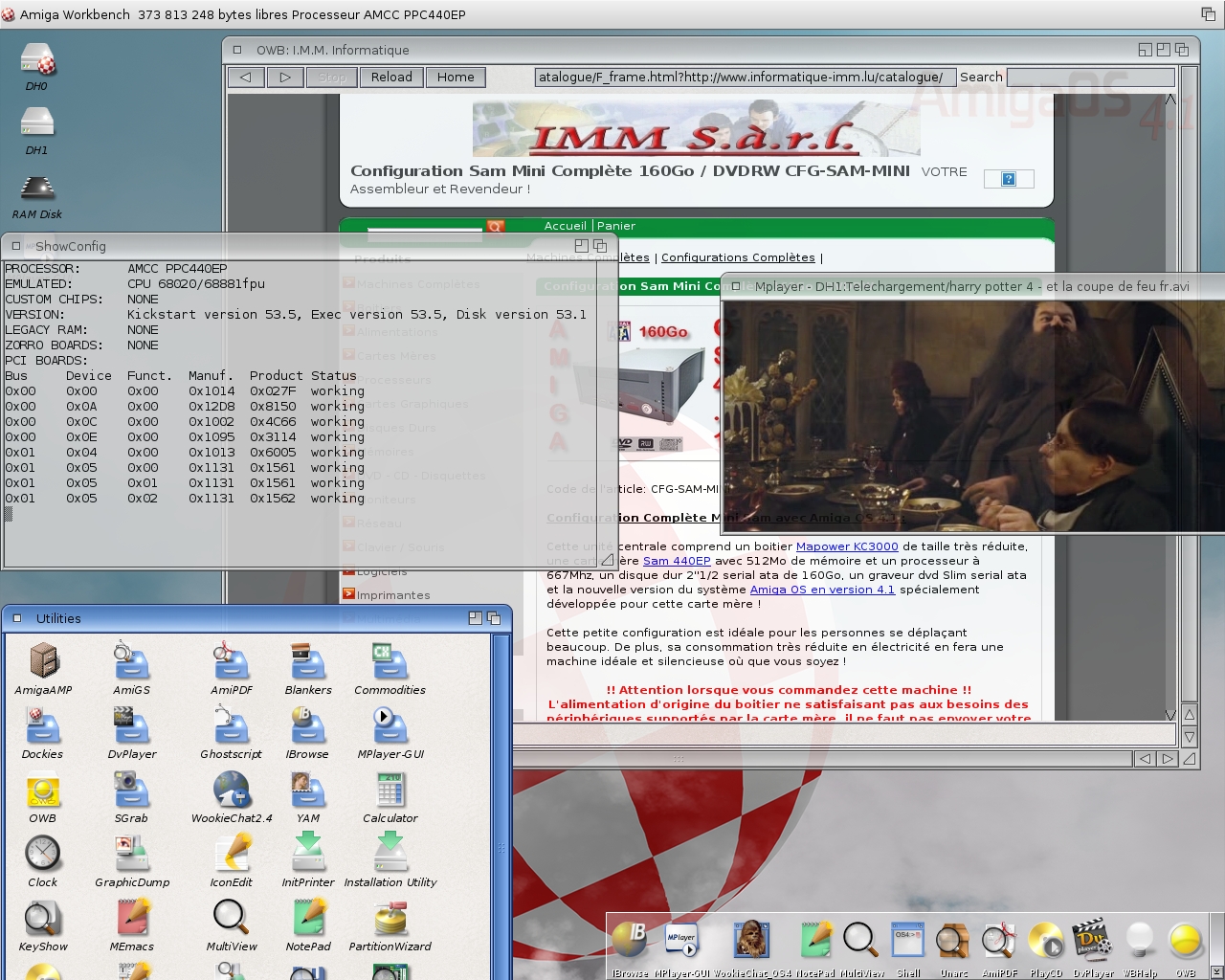 AmigaOS 4.1
AmigaOS 4.1
 Fedora 9
Fedora 9
Conclusion
The Sam440ep is a high quality unit and has many technical assets placing it well within the industrial market but also in the Amiga market. Being the first Amiga to offer SATA and USB 2 as standard, the Sam440ep is definitely a capable machine and given that it consumes very little energy and requires no fan the Sam440ep should be very popular. Unfortunately, the processor may be considered somewhat slow for the high price but there should still be a number of potential buyers.
AmigaOS4 users have waited for many months to see the Sam440ep supported and now this support has arrived. AROS is also an option.
Written by: David Brunet - October 2008
English version Published: 1st January 2009
Edited and translated for Intuitionbase by Jonathan "GiGa" Haddock
